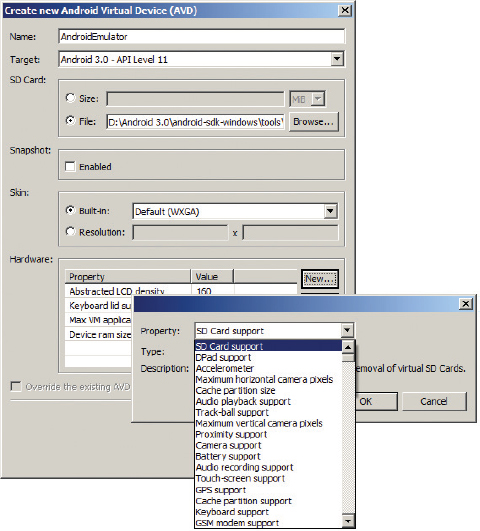EMULATING PHYSICAL CAPABILITIES
In addition to emulating devices of different screen sizes, you also have the option to emulate different hardware capabilities. When creating a new AVD, clicking the New . . . button will display a dialog for choosing the type of hardware you want to emulate (see Figure B-16).
For example, if you want to emulate an Android device with no touch screen, select the “Touch-screen support” property and click OK. Back in the AVD dialog, change the value of the property from yes to no (see Figure B-17).
This will create an AVD with no touch-screen support (i.e., users won’t be able to use their mouse to click on the screen).
You can also simulate location data using the Android emulator. Chapter 4 discusses this in more detail.
KEYBOARD SHORTCUTS
The Android emulator supports several keyboard shortcuts that enable you to mimic the behavior of a real handset. The following list describes the shortcuts that you can use with the emulator:
- Esc — Back
- Home — Main screen
- F2 — Toggles context-sensitive menu
- F3 — Call Log
- F4 — Lock
- F5 — Search
- F8 — Toggles data network (3G)
- Ctrl+F5 — Ringer volume up
- Ctrl+F6 — Ringer volume down
- Ctrl+F11/Ctrl+F12 — Toggle orientation
For example, by pressing Ctrl+F11, you can change the orientation of the emulator to portrait mode (see Figure B-18).
One useful tip to make your development more productive is to keep your Android emulator running during development — avoid closing and restarting it. Because the emulator takes time to boot up, it is much better to leave it running when you are debugging your applications.



